


Abstract: With the transformation and upgrading of the sand and gravel aggregate industry, it is imperative to build a new sand and gravel aggregate production line that meets national policies, environmental protection requirements, and industrial upgrading requirements. This article briefly describes the structure of engineering robots, analyzes their technical characteristics and application scope, introduces the application of engineering robots in new sand and gravel aggregate production lines, and prospects the application prospects of engineering robots in the sand and gravel industry.
Keywords: engineering robotic arm, sand and gravel aggregate, rotary crusher, mobile crushing station
Engineering robotic arm is a high-power crushing and dismantling equipment that integrates mechanical, electrical, and hydraulic functions. It is mainly used at the inlet or screen of crushing machines in various mines and quarries for secondary crushing of large materials. It can also be used for shelling and unpacking of steel ladles and metallurgical furnaces in smelters. Engineering robots have become a star product in the sand and cement industry due to their advantages such as high crushing ratio, high crushing efficiency, and simple structure. Different types and specifications of engineering robots can meet different production requirements, and can perfectly achieve crushing operations in many production lines such as sand and cement, ensuring the smooth progress of the next production process.
The fixed hydraulic crusher body is composed of a base, a rotating mechanism, a working device, and an operating room (optional). The entire machine is simulated in multiple directions through 3D drawing software modeling to determine the optimal working and installation range, and the structure is analyzed through finite element analysis to ensure that its performance meets customer requirements. Due to its unique working principle and structural characteristics, engineering robots have many advantages when used in the sand and gravel industry:
1. Through video monitoring and remote control, precise positioning operations can be achieved, away from the operating site, and improving the working environment.
2. Equipped with high-quality hydraulic hammers, significantly improving work efficiency; Integrated and optimized design of the entire system for better performance; High maintenance, with a failure rate reduced by 80% compared to traditional diesel equipment.
3. Configure a high-performance shock absorption system to reduce the damage of impact loads to the entire machine and foundation structure; The core components are equipped with world-class brands, ensuring quality assurance.
4. Motor driven, clean, energy-saving, environmentally friendly, and pollution-free; The energy consumption cost is reduced by more than 50% compared to traditional diesel equipment.
In the crushing production line of the sand and gravel industry, jaw crushers, rotary crushers, and mobile crushing stations are commonly used equipment. The use of these equipment greatly improves the efficiency of sand and gravel crushing, but during the production process, there may also be blockages of large pieces of sand and gravel at the feeding port, seriously affecting the feeding. The feed inlet of a jaw crusher is often blocked by large pieces of material, affecting production efficiency. The same problem exists at the feed inlet of the rotary crusher and the feed inlet of the mobile crushing station. The use of engineering robots for secondary crushing effectively promotes the efficient operation of sand and gravel enterprises and improves the mechanization and automation level of sand and gravel production lines. As shown in Figure 1, the schematic diagram of the engineering robot's crushing operation at the feed inlet of the jaw crusher is shown. Figure 2 is the schematic diagram of the engineering robot's crushing operation at the feed inlet of the rotary crusher. Figure 3 is the schematic diagram of the engineering robot's crushing operation at the feed inlet of the mobile crushing station.
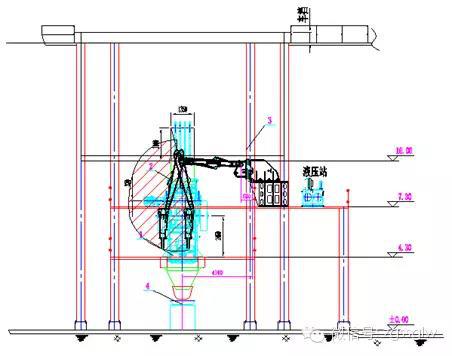
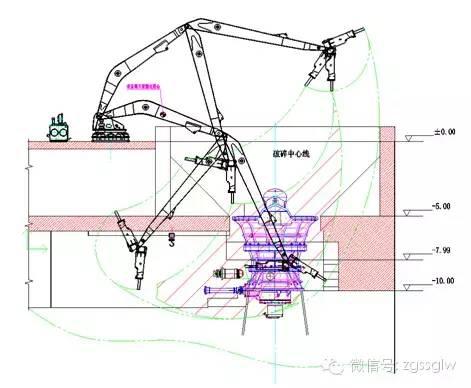
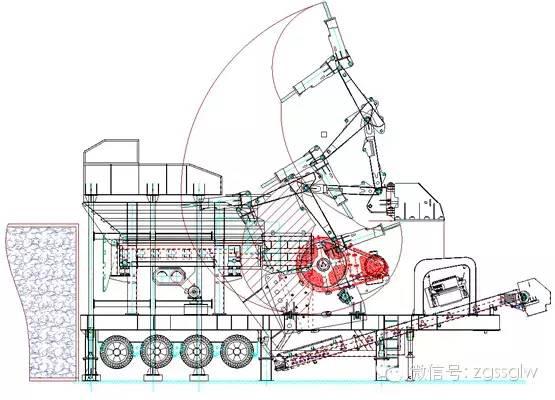
Figure 3 Scheme diagram of mobile crushing station
At present, Jingtian Company has developed and produced multiple specifications of engineering robots that are designed specifically for the crushing production line of the sand and gravel industry. Adhering to the consistent high quality and meticulous craftsmanship of the original series of products, they can be applied to various parts of the sand and gravel crushing production line, primary crushing sites, upper screening and feeding machines in the silo, jaw crusher feeding ports, rotary crusher feeding ports, and mobile crushing stations, quickly completing the crushing operation of blocked materials. Due to its high efficiency, low energy consumption, and low risk, it enhances the production efficiency of the entire crushing line and has become the preferred intelligent equipment for sand and gravel enterprises.
Since its introduction to the market, Jingtian Company's engineering robotic arm has been promoted and applied in dozens of large state-owned enterprises such as Zhongse Group, China Gold Group, Jinchuan Group, and Ansteel Group. In the sand and gravel industry, it is mainly used for fixed jaw crusher ports, rotary crusher feed ports, and mobile crushing stations. Enterprises such as Zhejiang Huzhou Dening Mining, Panzhihua Baimashan, and Panasonic Wharf have already used engineering robots for jaw crushers. As shown in Figure 4, crushers are responsible for simultaneously crushing materials that are blocked at the inlet of two jaw crushers, which can significantly improve crushing efficiency. Figure 5 shows the operation of the feed inlet of the Qidashan rotary crusher, which is installed on a 24.8-meter platform and has multiple operation modes (manual control, cab control, wireless remote control, central control room operation). Especially in case of electrical system failure, manual operation is provided to avoid affecting production. When the crusher is working, it handles oversized large materials, assists the crusher in feeding, ensures smooth operation of the rotary crusher, and undertakes the disassembly task of the fixed cone plate of the rotary crusher (the fixed cone lining plate is made of zinc alloy). Figure 6 shows an engineering robot operating on a mobile crushing station in South Africa. The engineering robot is installed next to the feeding port of the mobile crushing station and is responsible for crushing large stones at the feeding port.
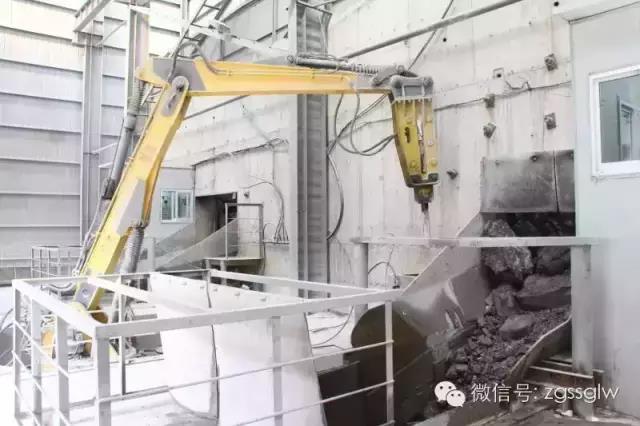
Figure 4 Fixed jaw crusher mouth

Schematic diagram of rotary crusher
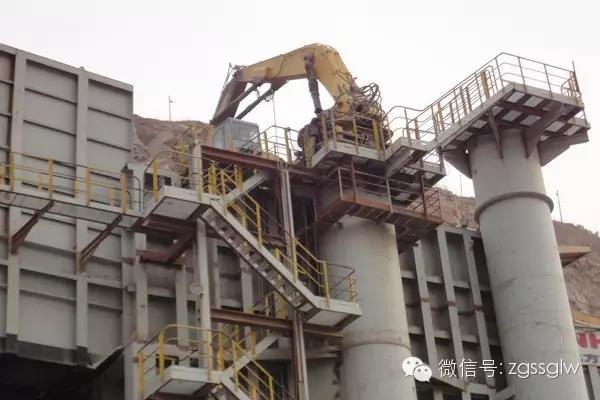
Figure 5 Application site image of the feed inlet operation of the rotary crusher
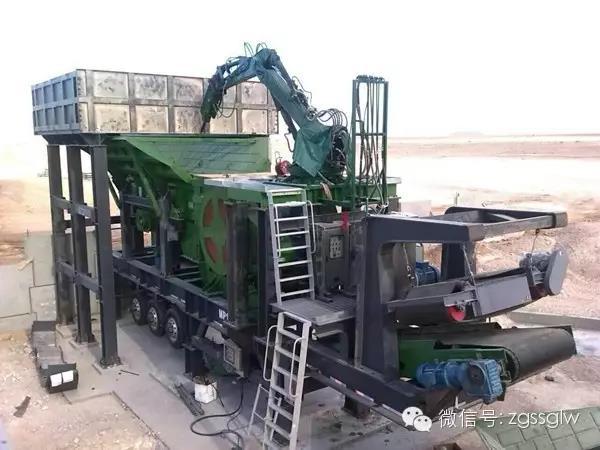
Figure 6 Mobile crushing station
The engineering robotic arm of Jingtian Company is built using international advanced technology, with excellent structural characteristics and stable performance, effectively achieving the crushing of sand and gravel. The secondary crushing operation of large stones is carried out at the mouth of the jaw crusher, mobile crushing station, and feed inlet of the rotary crusher to ensure the smooth progress of sand and stone crushing, which can perfectly cooperate with the crushing operation of the sand and stone industry. These are very meaningful for improving the product quality and production efficiency of sand and stone materials. Nowadays, engineering robots have been successfully applied in multiple cities both domestically and internationally, as well as in multiple gravel yards, bringing great economic benefits to the development of sand and gravel enterprises and successfully promoting the development of low-carbon economy in cities. Therefore, engineering robots will have good development and application prospects in the sand and gravel industry, which can greatly improve the comprehensive competitiveness of sand and gravel enterprises.